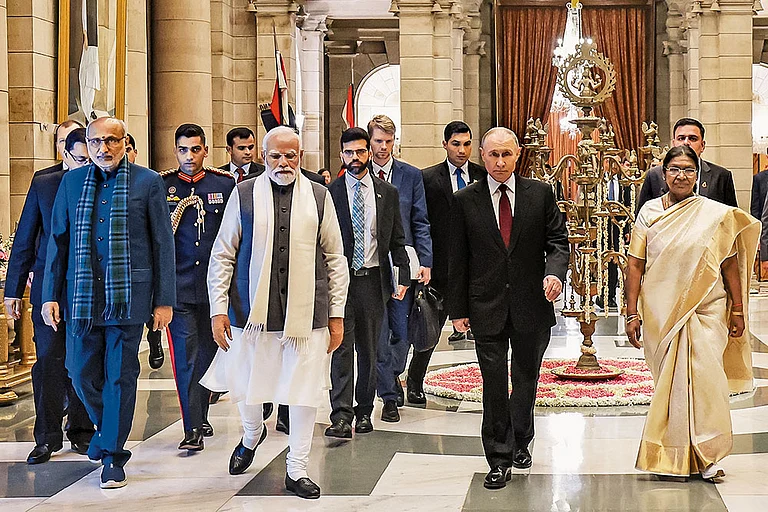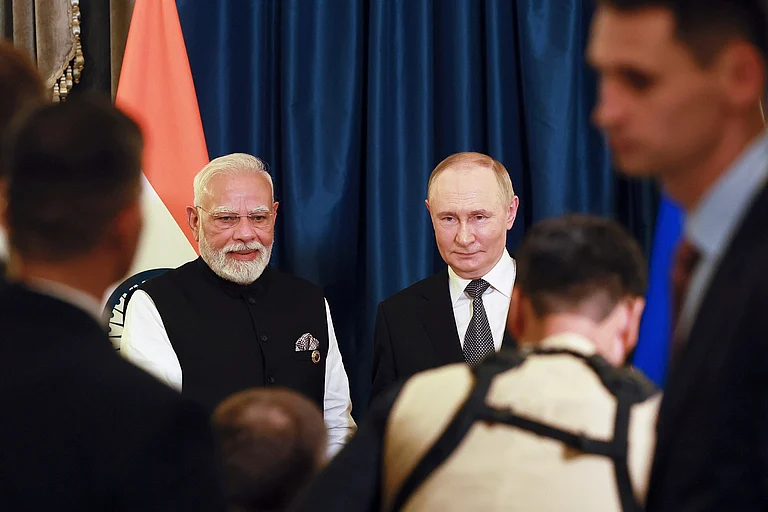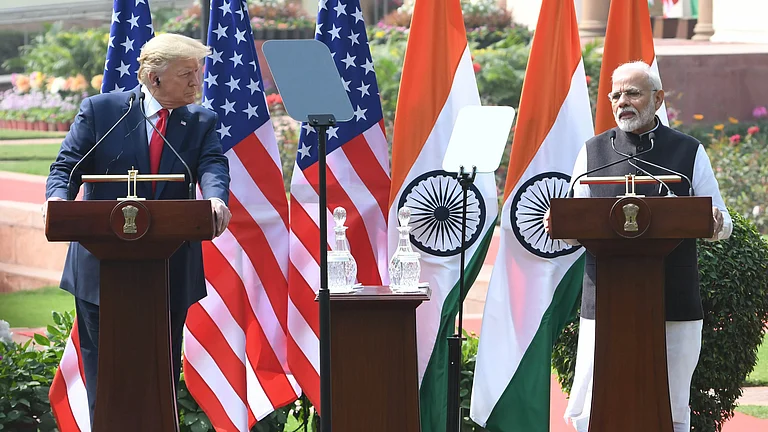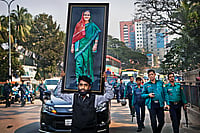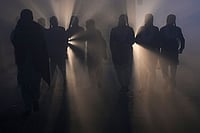
As President Trump’s tariff war impacts global trade, Moscow is quietly pushing to revive and energise RIC, the Russia-India-China triangle.
RIC was first proposed in the late 1990s by then-Foreign Minister Yevgeny Primakov after the breakup of the former Soviet Union.
India, however, wary of further deepening friction with the US, is treading carefully, reluctant to further annoy the mercurial US President.
As President Trump’s tariff war impacts global trade, Moscow is quietly pushing to energise RIC, the Russia-India-China triangle.
RIC was always a Russian idea, first floated in the late 1990s by then-Foreign Minister Yevgeny Primakov after the breakup of the former Soviet Union. RIC was perceived by Moscow as a counterweight to Western dominance, but the grouping has remained more symbolic than strategic.
Now, with Washington turning the screws on New Delhi and Beijing, Russia sees an opportunity to revive the RIC. India, however, wary of further deepening friction with the US, is treading carefully, reluctant to further annoy the mercurial US President. But if the situation takes an ugly turn with no compromise on tariffs, New Delhi could rethink its position.
RIC was first proposed when Primakov, as the prime minister, visited India in December 1998. The format developed slowly. President Vladimir Putin, former Prime Minister Manmohan Singh, and China’s then-President Hu Jintao attended the first RIC informal summit in St. Petersburg. This was in July 2006, on the sidelines of the G8 summit being hosted by Russia. Earlier in 2002, the foreign ministers of RIC had met for the first time. Today, it remains a platform for dialogue, although its effectiveness is unclear.
India-China Tension
RIC had never reached its full potential, mainly because of the animosity between India and China. At the same time, both countries have good relations with Russia. Since the Ladakh face-off, RIC has become more or less moribund, with no summits or even foreign minister-level meetings since then.
But with a thaw in India–China ties, Moscow is pushing to revive the grouping. All eyes will be on the Shanghai Cooperation Organisation meeting in China, where Prime Minister Narendra Modi is likely to have a bilateral with President Xi Jinping. Whether Putin, Modi, and Xi also meet informally on the sidelines will indicate whether the RIC can be revived.
Analysts in India are divided on the issue. Except for those on the Left, most others are against rekindling the triangular alliance, as it will give a wrong signal to the West. But many, including top American economist Jeffrey Sachs, appearing on Indian television channels regularly since Trump’s targeting of India, have repeatedly called for the two Asian giants to resolve their differences and work together to create a more balanced world order. But New Delhi’s mistrust of China since the 1962 border conflict is difficult to surmount. China has not helped matters by its constant incursions and its tough negotiating stance on the boundary issue. China has resolved its border issues with nearly all its neighbours save India and Bhutan. RIC could reappear in the diplomatic calendar, but is unlikely to make much of an impact, unless India and China work out their long-standing boundary dispute.
Why did Russia Promote RIC?
When the Berlin Wall came down, followed by the breakup of the former Soviet Union in 1991, the ideological battle between Capitalism and Communism was won by the US and its allies. The world was left with just one superpower. The domination of capitalism and America was complete. However, the idea of a pushback was born when Russia realised that Washington was not about to yield an inch. NATO expansion eastwards that began in the mid-1990s continued. Western intervention in Kosovo indicated to the Kremlin that Russia remained an enemy state. China and the US were still best buddies when the Primakov triangle took root.
Russia’s motive was not just to counter US dominance but to promote a multipolar world. India had graduated by now from non-alignment of the early years of independence to a view that envisioned a multipolar order, where there was not just one or two dominant powers, but several centres of power for a more equal world order in the post-Cold War era. The Kremlin also wanted to break away from a pro-Western foreign policy that was promoted by Boris Yeltsin. The three countries would collaborate on trade, energy, technology and help each other as emerging economies faced with similar challenges of Western-dominated financial institutions.
Is This The Moment When RIC Can Rise From The Ashes?
Russia is banking on the Trump tariff war against India and China to get the RIC back on track. Russia’s argument is that big economies like China, India and Russia should now build a trading system incorporating the Central Asian countries and invest in regional trade. Secure intra-RIC trade channels through Central Asia will help to absorb the tension of the disruption of supply lines in the current flux in the world economy.
Sweeping and all-encompassing US and Western sanctions by Joe Biden on Russia could have ruined the country’s economy, but for the fact that China and India have stepped in. Besides, weaponisation of the dollar has affected the entire Global South, and replacing the mighty dollar with trade in local currency is an idea that most developing nations welcome. The US is well aware of it, and Donald Trump’s threat to BRICS of 100 per cent tariffs if any country attempts to weaken the dollar is understandable. RIC could be a force of good for the Global South, but it is too early to say if RIC has a future.









